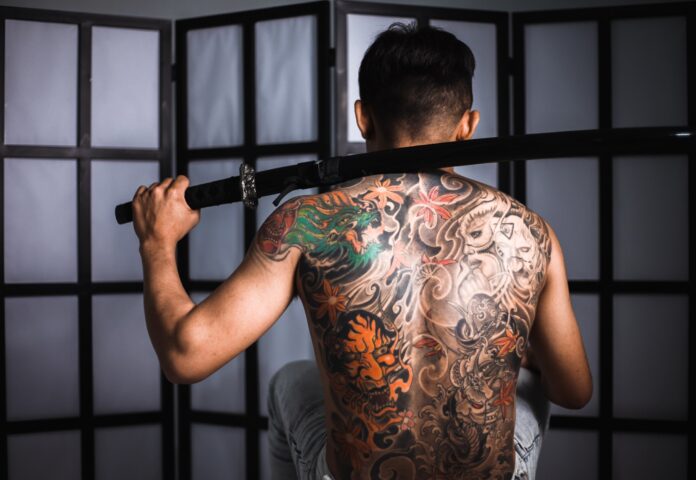Tattoos have captivated the human imagination for centuries, serving as powerful symbols of identity, spirituality, and artistic expression. In the old days, people used to get tattooed for all sorts of reasons from intimidation to spirituality. In this article, we delve into the rich history of tattoos, exploring their ancient origins, their evolution through different cultures, and their significance in the modern world.
Ancient Origins of Tattoos
Tattooing contrary to popular belief is not a modern practice but dates back thousands of years. Prehistoric evidence reveals that our ancestors used tattoos to adorn their bodies for all kinds of reasons. Ancient civilizations such as Egypt, Polynesia, China, and Japan had deep-rooted traditions surrounding tattooing, each with its own unique symbolism. For all these civilizations the tattoos and tattooing itself holds cultural significance.
Tattoos in the Western World
The introduction of tattoos to the Western world can be traced back to ancient Greece and Rome. There they held both decorative and punitive roles. However, the Middle Ages witnessed a decline in tattooing due to religious and societal factors. It wasn’t until the Renaissance that tattoos began to re-emerge, gaining popularity among explorers, seafarers, and the nobility.
Tattoos in Indigenous Cultures
Indigenous cultures across the globe have long embraced tattoos as an integral part of their traditions. Native American tribes, for instance, used tattoos for spiritual and ritualistic purposes. Similarly, tribes in Africa and South America utilized tattoos to signify identity, social status, and tribal affiliations. For those cultured tattoos hold a significance far greater than that of purely a decorative practice.
Tattoos in Modern History
The 18th and 19th centuries saw tattoos becoming associated with sailors, marking their journeys and protecting them from harm. Concurrently, tattoos gained traction among criminals and marginalized groups, carrying their own distinct meanings within these subcultures. World War II played a pivotal role in popularizing tattoos as soldiers adorned their bodies with patriotic symbols and personal mementos. Tattoos for the marginalized were both a form of protest as well as a method of spreading information. We can often find the faces of leaders of movements and their famous quotes as tattoos.
Evolution of Tattooing Techniques
Tattooing techniques have undergone significant transformations over time. Traditional methods involved hand-tapping or stick-and-poke, using natural pigments. However, the invention of the tattoo machine revolutionized the industry, enabling artists to create intricate designs with greater precision. Today, modern advancements such as laser removal and cosmetic tattooing offer new possibilities for tattoo enthusiasts. And also for those seeking modification or correction. For people hoping to experience tattoos in their ancient forms, there are still places in both southern Asia and tribal Africa which still practice traditional methods of tattooing.
Contemporary Tattoo Culture
In the present day, tattoos have evolved into a vibrant form of self-expression and artistry. People from all walks of life embrace tattoos as a means to convey their individuality, commemorate loved ones, or simply celebrate their passions. Various tattoo styles and trends have emerged, including traditional, realism, watercolor, and minimalist designs. Tattoo artists have become revered professionals, shaping the industry and pushing the boundaries of creativity. Tattoos have also permeated mainstream media and pop culture, with celebrities proudly showcasing their inked bodies.
Changing Attitudes and Acceptance
Tattoos have experienced shifting perceptions throughout history. Once associated with rebellion and subculture, tattoos faced stigmatization and were deemed unprofessional. However, societal attitudes have evolved, and tattoos are now more widely accepted and appreciated. Nevertheless, workplace policies and legal considerations regarding visible tattoos continue to vary, reflecting the ongoing debates surrounding individual freedom, personal expression, and societal norms.
Conclusion
Tattoos have a captivating history, symbolizing self-expression and cultural identity. From ancient origins to modern art forms, they leave an indelible mark on humanity. Today, tattoos offer diverse styles and trends, pushing creative boundaries. While acceptance has grown, debates on visible tattoos in professional settings continue. As tattoos evolve, they reflect the ever-changing landscape of human expression, weaving stories and embodying our shared humanity.
And as always folks if you are looking to read some interesting articles in Hindi be sure to check out the Mojo Patrakar. Also if you enjoyed this article be sure to check out some more interesting articles such as Astrobiology: The Search for Life Beyond Earth in the Universe.









